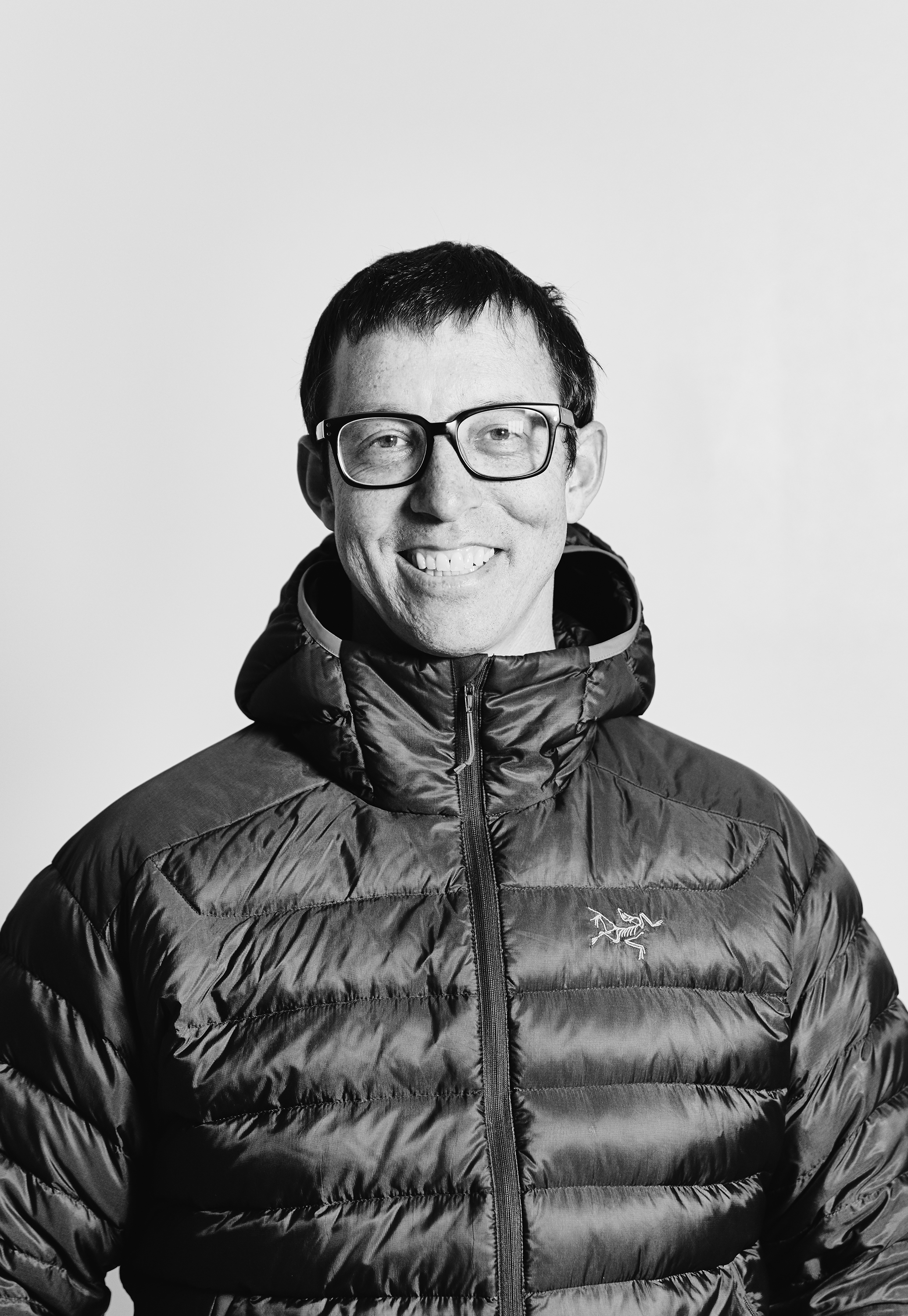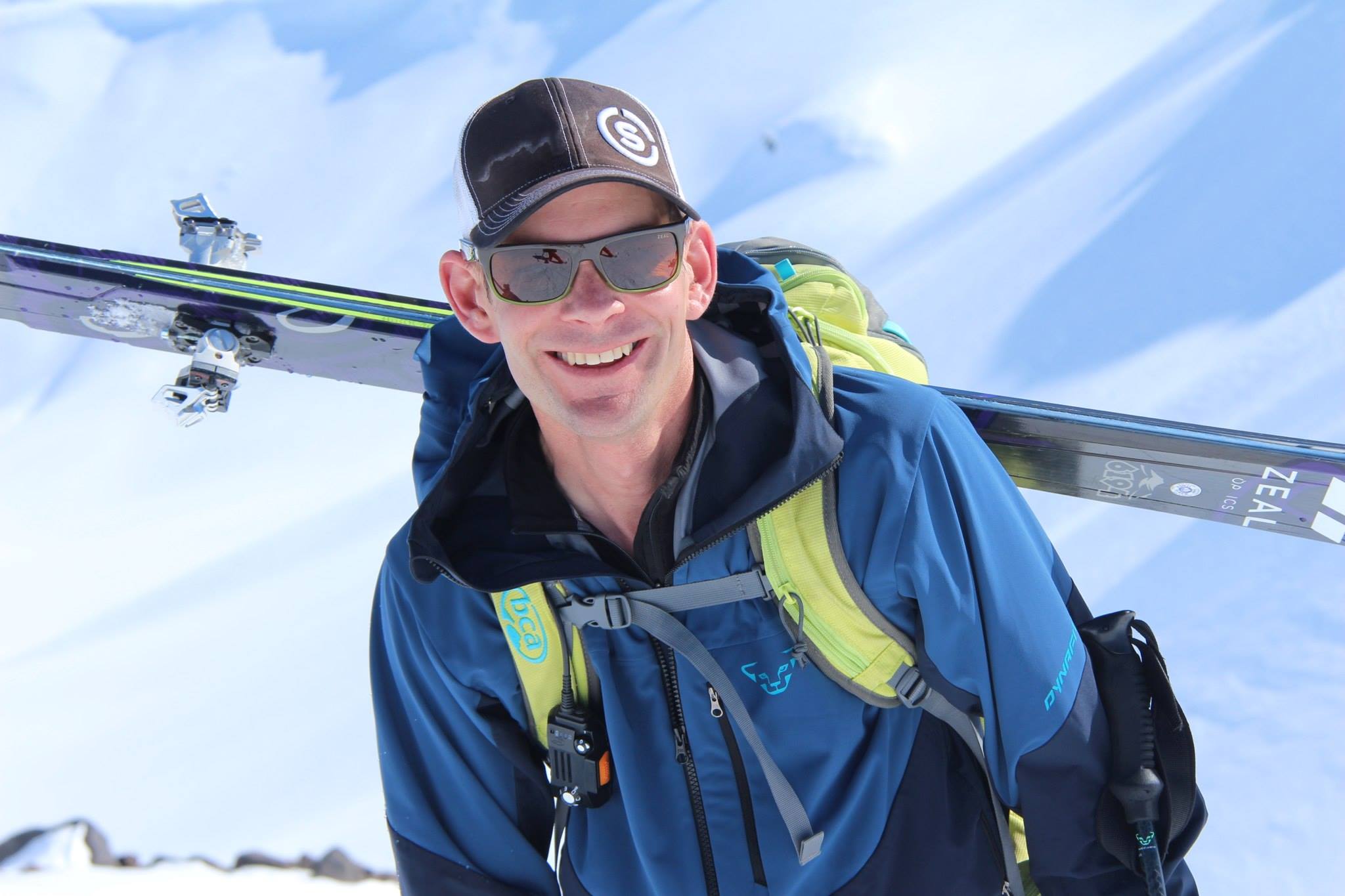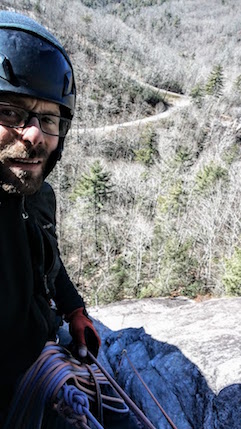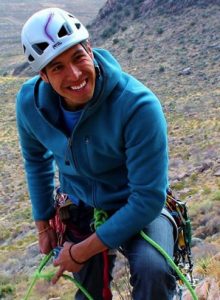2012 GORE-TEX Scholarship recipient Jesse Williams

I would like to thank Gore-Tex for their support of American mountain guides. I was the fortunate recipient of the 2012 AMGA GORE-TEX® scholarship, which I applied toward the Ski Mountaineering Exam in Roger’s Pass, British Columbia and the Canadian Rockies, Alberta. With a unique blend of Alps-scale terrain, huts and helicopter access, combined with a North American vision for protected wilderness, and reliably cold northern latitudes, western Canada is a world-class mecca for skiers and ice and alpine climbers. It was a fitting venue for the final exam in my own long path toward full IFMGA certification–17 years after I first roped up as an apprentice rock guide.
I remember the first time I considered certification. I was in the Italian Dolomiti, assisting another American guide and a local Tirolean UIAGM mountain guide with a group of guests on a training trip for a private Kilimanjaro Trek, scheduled to summit on the dawn of the new millennium. After another day of hiking and scrambling via ferrata in the Gruppo Sella, we were relaxing in the sporthotel bar after a delicious meal. The sunny alpine rock above Val Gardena reminded me of the lush green valleys of the Adirondacks where I had first started out as a rock and ice climbing guide. After a long season on Rainier’s glaciers, it felt familiar and satisfying to move efficiently over dry rock again. Add in great guests with a taste for fine food and wine, and this style of alpine guiding was looking like a pretty good gig to me.
It was August in Europe, and multiple generations of families were enjoying their holiday in the mountains. This included a nice older couple from Milan and their beautiful blonde haired, blue-eyed daughter, about my age, who also happened to be staying at the same lodge. Over the week we had exchanged smiles in passing, and finally–the last night there, we met in the bar and were actually talking. Or trying to, rather, as I didn’t speak Italian and she didn’t speak English. So the conversation was buoyed along by her somewhat loud friend acting as interpreter. The blonde woman was still smiling though, so I kept smiling back.
”What do I do? I’m a mountain guide,” I explained to the loud friend, making the most of my lowly position as second assistant on this trip
“Oh so you’re a certified mountain guide?” she asked. “I hear that is very, very difficult and takes many, many years. You need lots of experience and you have to be very good.”
“Well,” I sheepishly explained, “in the U.S. we don’t have to be certified to guide.” But I quickly qualified my statement. “Rather than individual certification, we are trained first as apprentices and then work within a particular guide service, on a particular mountain or range the service is permitted for, but of course our guides are equally experienced.”
“Oh, so you’re not a certified guide then.” She looked down her nose at me. “Hmmh.”

Regardless of my justifiable experience, she was unimpressed by my lack of professional credential, and I had to acknowledge, she had a point. Having lost interest, the loud woman moved on down the bar, leaving my conversation with the beautiful blond woman to wane quickly into the inevitably resigned “Ciao”–one of the few Italian words I had grown comfortable using appropriately.
At that point I realized that no matter how much experience I had, or how good a guide I might be–whenever I went to a new country, venue, or community to guide, I would inevitably end up trying to qualify (and quantify) myself as a professional in some long- winded explanation of my own career journey: first as a rock and ice climbing instructor, as a ski patroller and backcountry instructor, as an alpine and expedition guide… and as an itinerant carpenter. But in Europe, I would always be an amateur. In the United States, in a scene like Jackson, Wyo. or Boulder, Colo., I would forever be qualifying myself to the resident locals, who might be reluctant to acknowledge the credibility of a mountain guide from anywhere else, especially a climbing backwater like the Adirondacks. In the ‘Dacks, humility and self-deprecation were perversely valued most by climbers, and in inverse proportion to one’s abilities. No matter how hard you thought you were, there was always an older, harder, better guy who climbed hard, but didn’t talk about it. After all, if you were good climber, it would be obvious soon enough.
Therein, I realized, was the attraction of having an IFMGA/AMGA pin. For me, it is not a trophy of achievement or a symbol of elitism, it’s a succinct statement of fact: I am an experienced and qualified mountain guide, and this is my chosen profession. I am not always perfect, but I operate above a standard of experience and ability that few recreational climbers, skiers, and alpinists possess, and I’ve already proven that to my peer guides. If I’m good enough to be a certified mountain guide, then it should be obvious soon enough in the mountains. There’s no need to spray about it, or get competitive any more than one would fell compelled to compare resumes with their certified doctor, attorney, contractor, or mechanic.
 Another 13 years and many mountains later, with the help of the AMGA and industry partners like GORE-TEX®, I can finally call myself an IFMGA certified mountain guide. When I return to the Dolomiti, I’ll have the pin to prove it. Better yet, this time around there’ll be no need to impress the beautiful blond haired, blue eyed woman at the bar–with my wife along (also a guide), I’ll have one of those with me, too!
Another 13 years and many mountains later, with the help of the AMGA and industry partners like GORE-TEX®, I can finally call myself an IFMGA certified mountain guide. When I return to the Dolomiti, I’ll have the pin to prove it. Better yet, this time around there’ll be no need to impress the beautiful blond haired, blue eyed woman at the bar–with my wife along (also a guide), I’ll have one of those with me, too!
The same goes for GORE-TEX®. Sure, there are other similar products out there, and you can read through long descriptions of how they work, or how they’re better or different–all of which may indeed be valid and grounded in practical experience. Or you can just look for the GORE-TEX® logo and take it at face value. If a product is good enough to bear the logo, its value will be obvious soon enough in the mountains.












